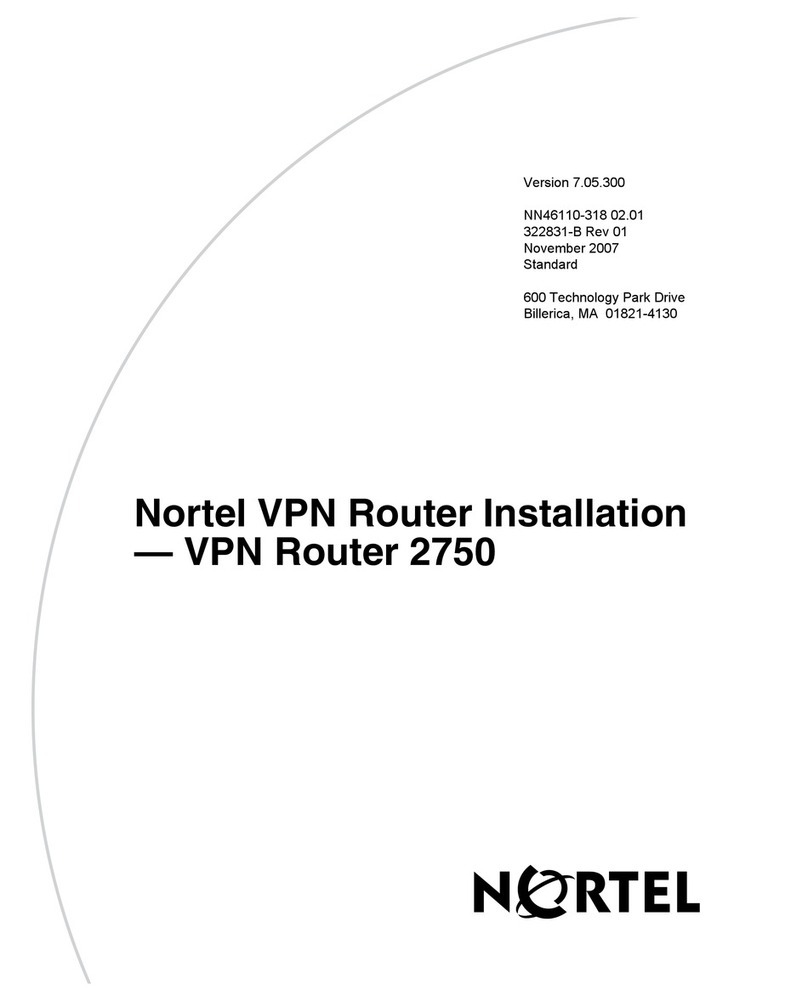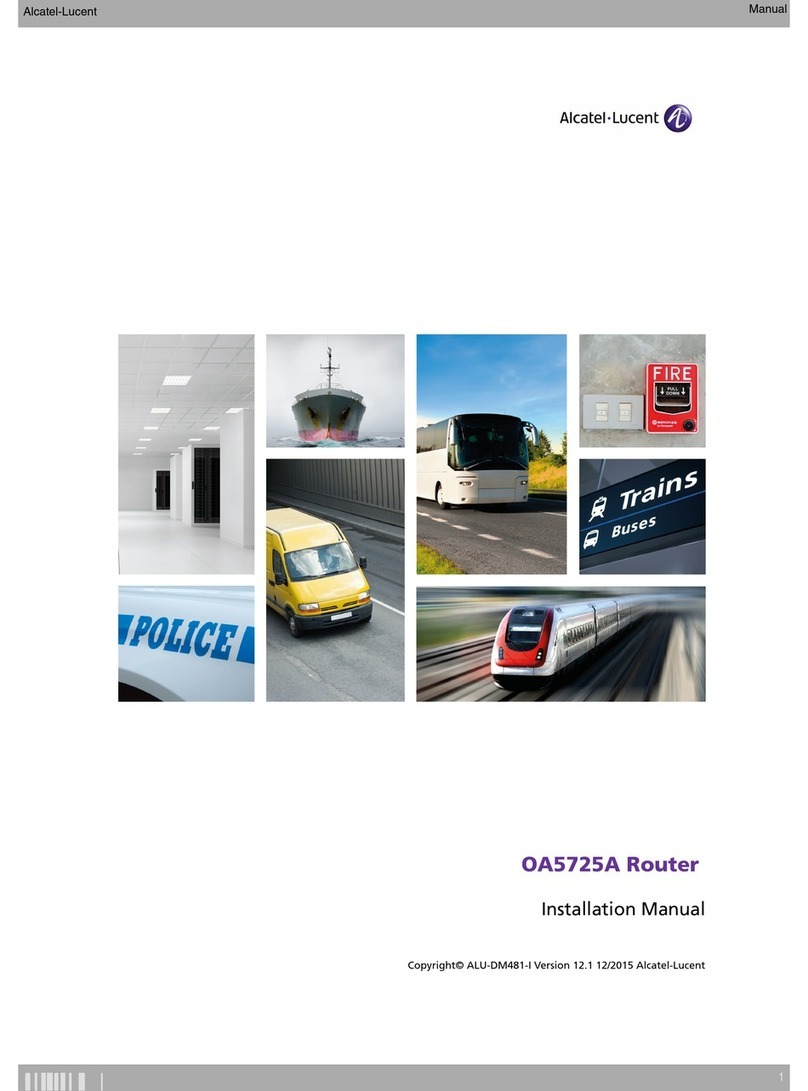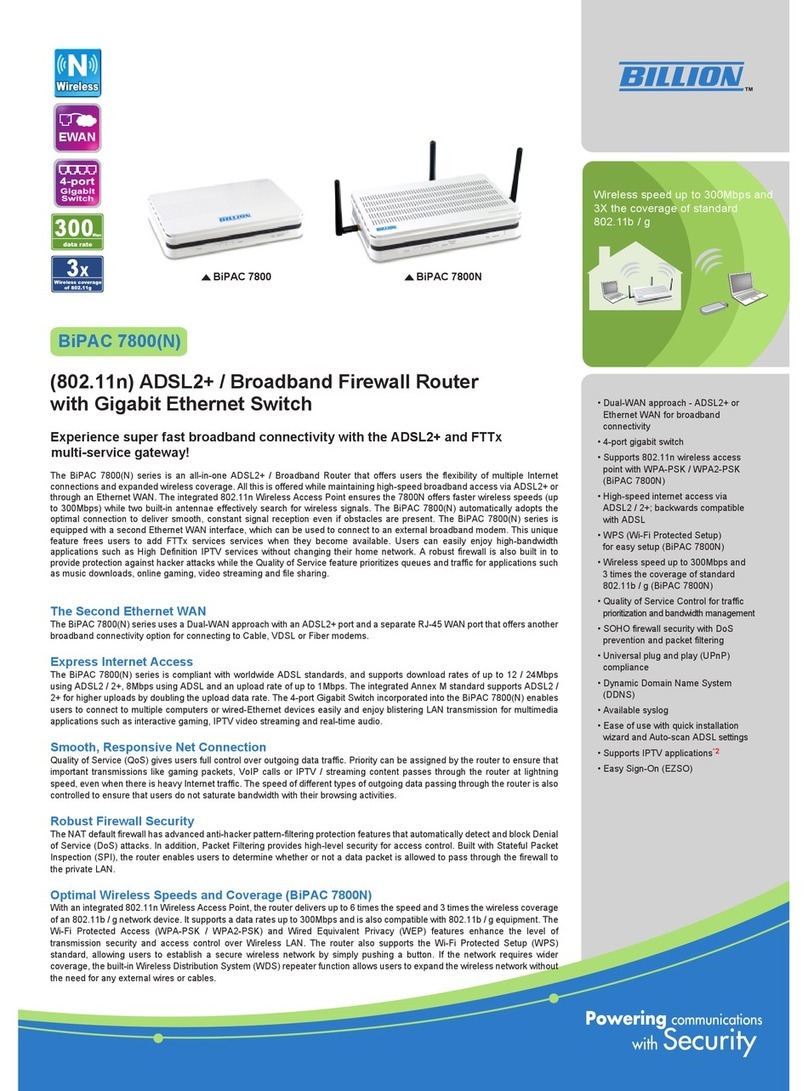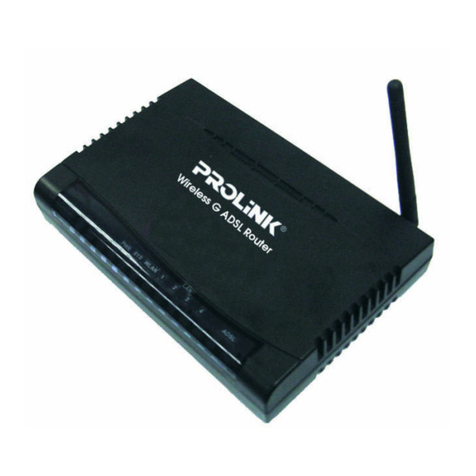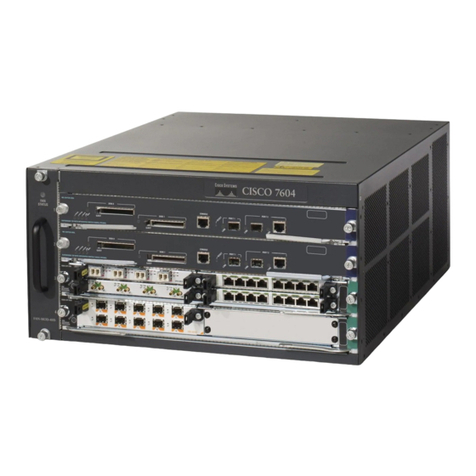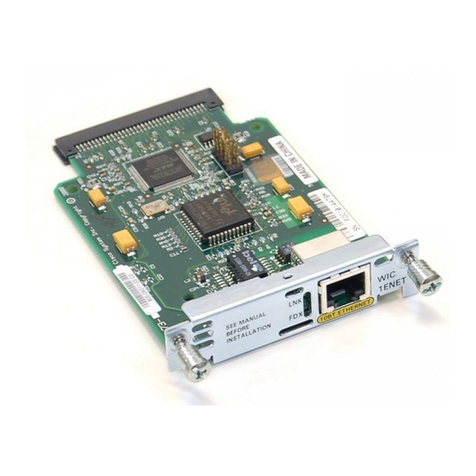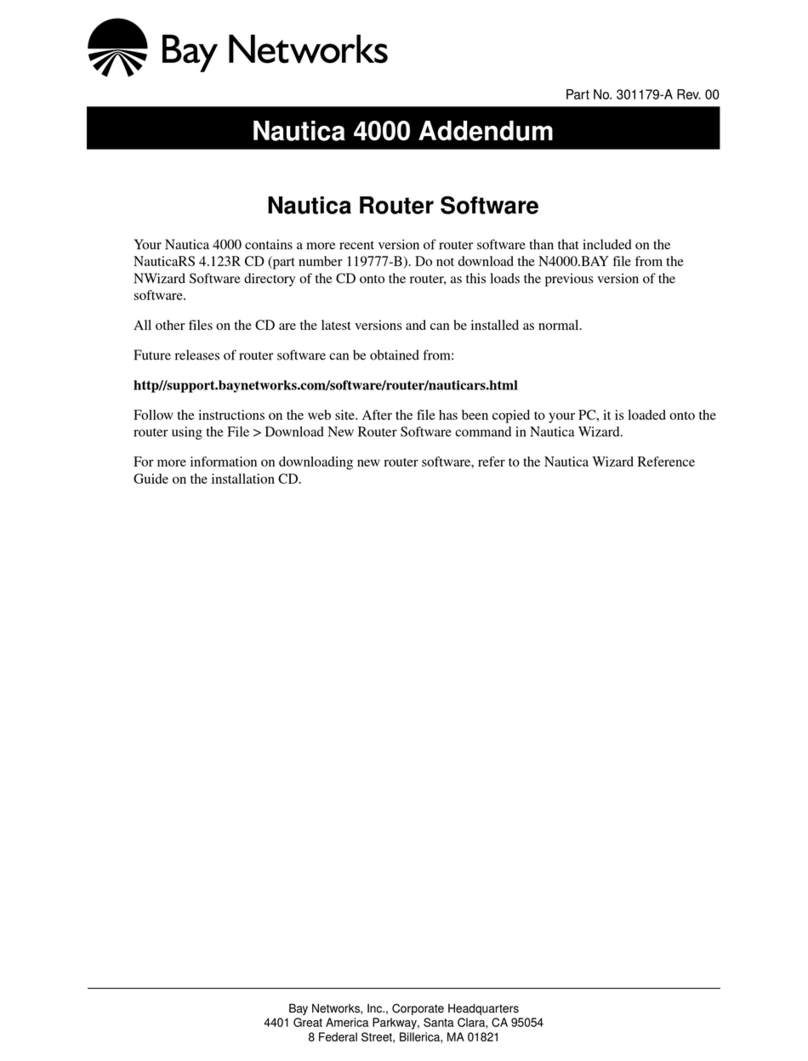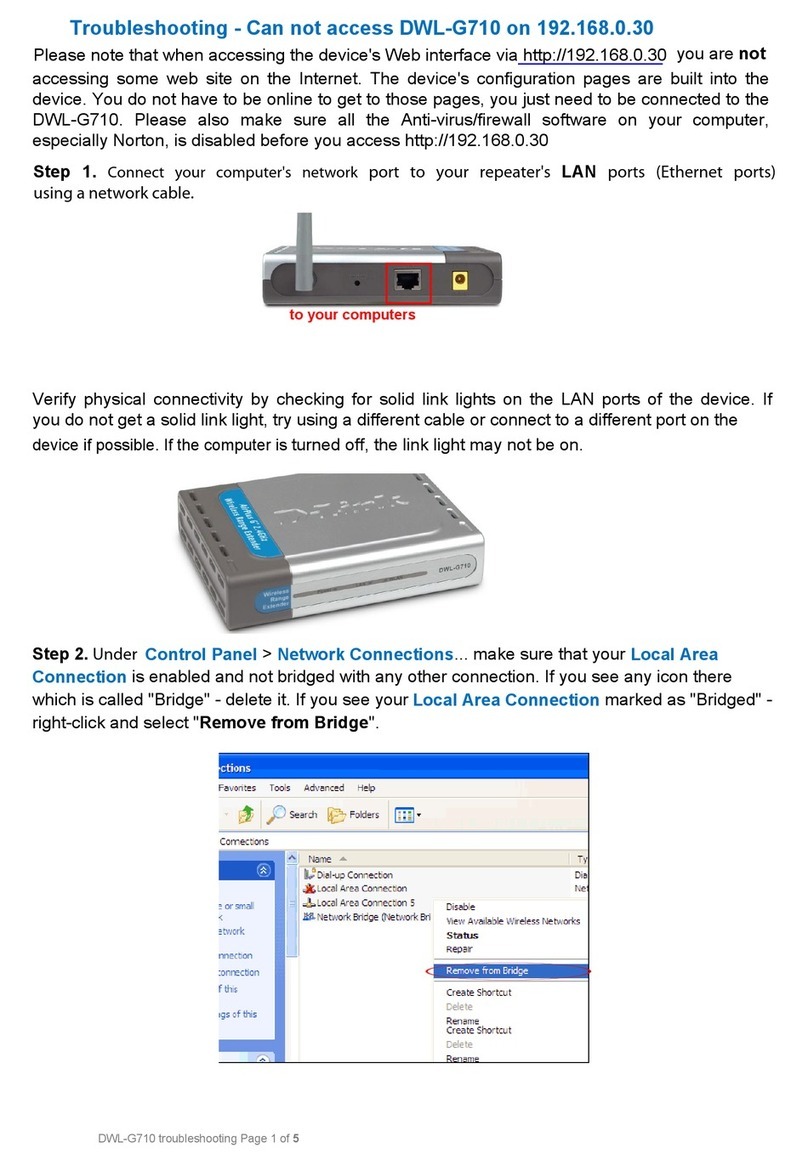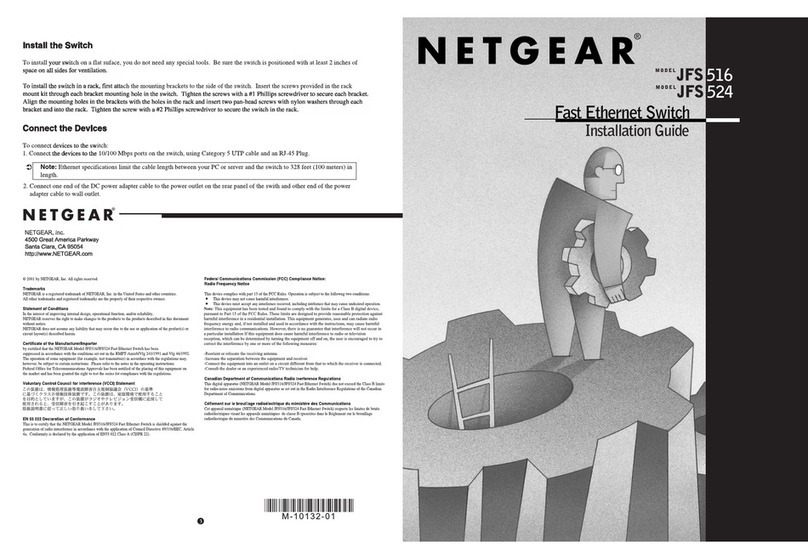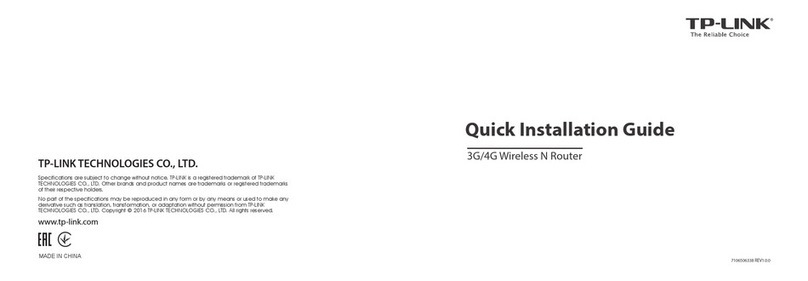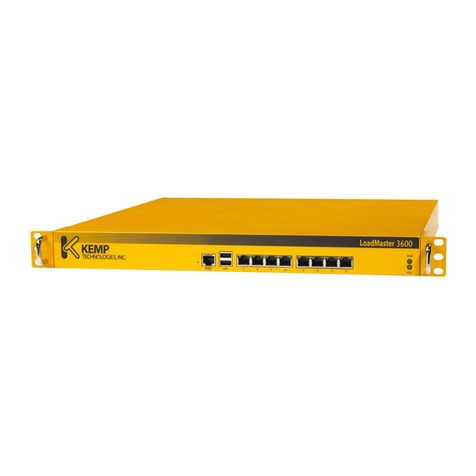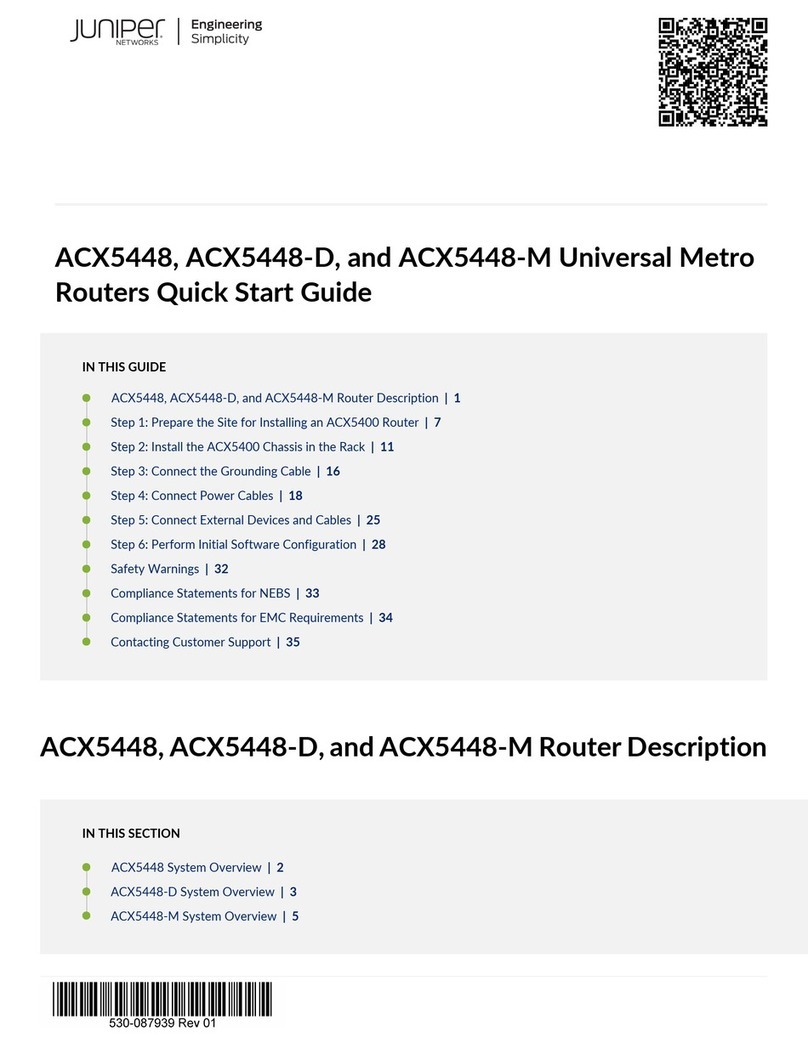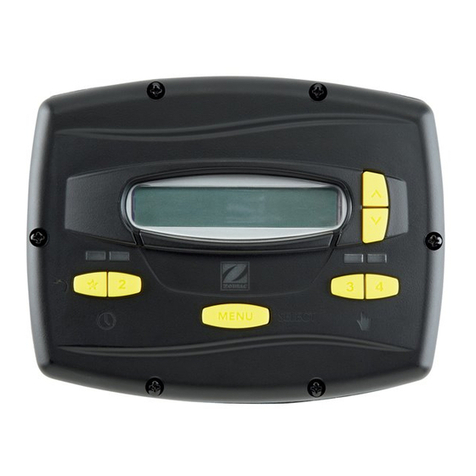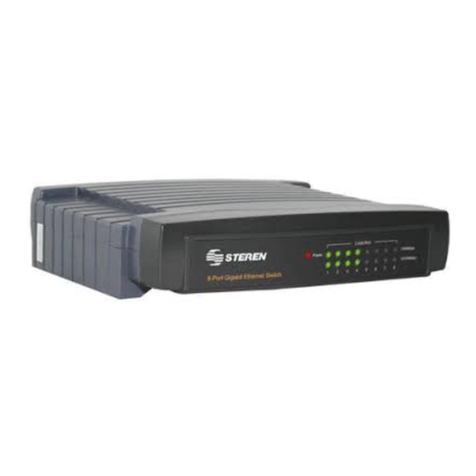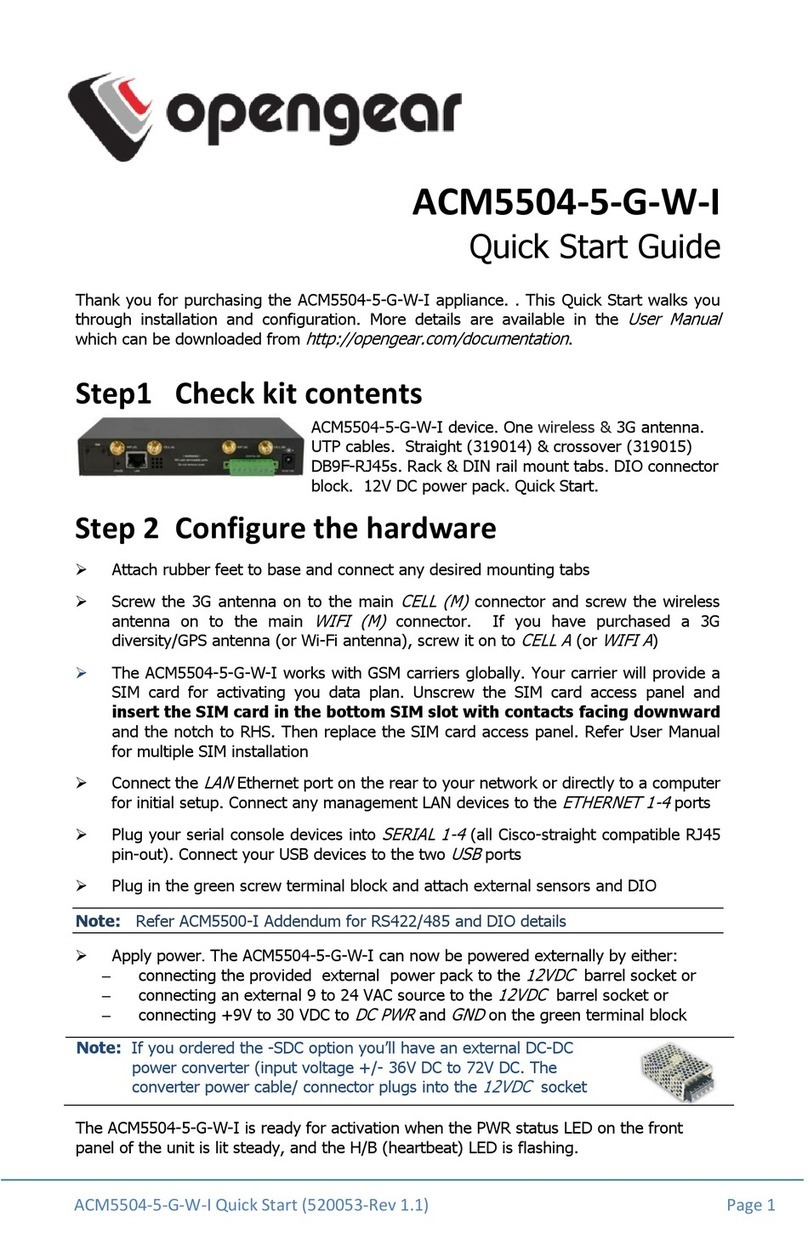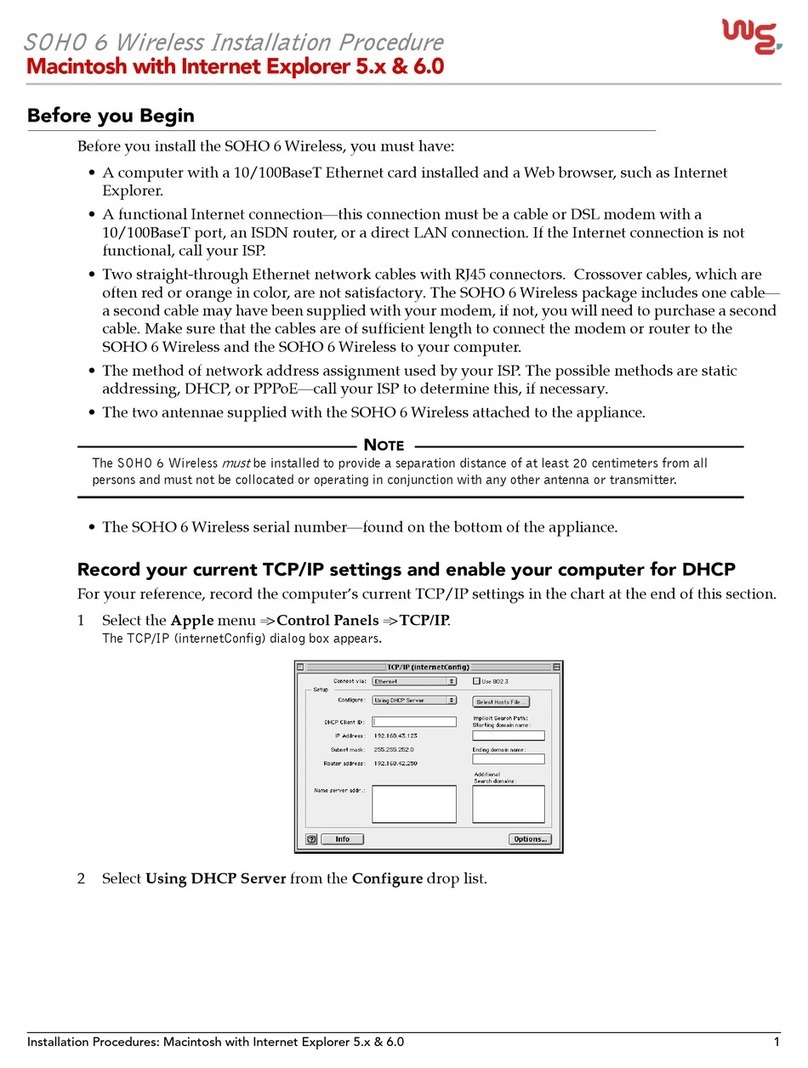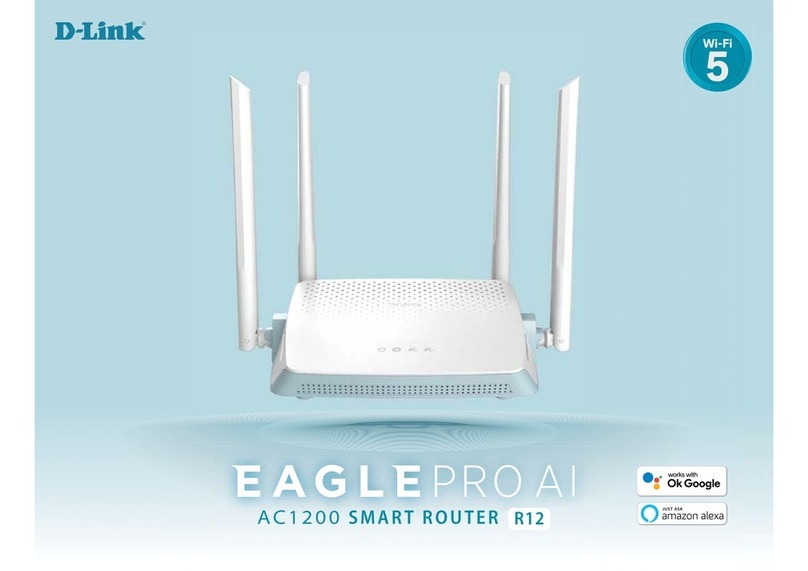Digitalchina Networks DCS-3950 series User manual

Digitalchina Networks Co.,Ltd All Rights Reserved 2008_06
http://networks.digitalchina.com
D
DC
CS
S-
-3
39
95
50
0
s
se
er
ri
ie
es
s
E
Et
th
he
er
rn
ne
et
t
S
Sw
wi
it
tc
ch
h
M
Ma
an
nu
ua
al
l
V
Ve
er
rs
si
io
on
n
1
1.
.4
4

II
DCS-3950 series Ethernet switch manual
Preface
DCS-3950 series is a high performance ethernet switch which support wire-speed
Layer 2 switching.
DCS-3950 series can seamlessly support various network interfaces from 10Mb,
100Mb, 1000Mb Ethernets.
DCS-3950 series is an excellent choice as access layer switch for education,
government and large/medium enterprise networks..DCS-3950 series comprises
DCS-3950-26C, DCS-3950-28CT, DCS-3950-28C and DCS-3950-52CT,
DCS-3950-52C. ,DCS-3950 series provide 24 10/100 ports+2 Gigabit Ethernet
fiber/copper ports; 24 10/100 ports+2 Gigabit Ethernet fiber/copper ports +2 Gigabit
copper ports ;24 10/100 ports+4 Gigabit Ethernet fiber/copper ports;48 10/100 ports+2
Gigabit Ethernet fiber/copper ports +2 Gigabit copper ports;48 10/100 ports+4 Gigabit
Ethernet fiber/copper ports.
We are providing this manual for your better understanding, using and maintenance
of the DCS-3950 series. We strongly recommend you to read through this manual
carefully before installation and configuration to avoid possible damage to the switch and
malfunction.
Software or hardware of the product may be updated after the release
of this manual. And if this manual should be updated according to the
product update, it is not promised the customers would be informed about
the update. To get more information about the product, or to get software
updates or manual updates, please go to http://networks.digitalchina.com
or dial 800-810-9119(in China) to get support.

III
DCS-3950 series Ethernet switch manual
Contents
Preface_______________________________________________________________ II
Contents____ _________________________________________________________III
Chapter 1 Introduction of Products _______________________________________ 1
1.1 Brief Introduction_____________________________________________________1
1.1.1 Overview_______________________________________________________________ 3
1.1.2 Features and Benefits_____________________________________________________ 3
1.1.3 Main Features___________________________________________________________ 5
1.2 Technical specifications ________________________________________________6
1.3 Physical Specifications _________________________________________________7
1.4 Product appearance ___________________________________________________7
1.4.1 Product Front Panel View _________________________________________________ 7
1.4.2 Product back panel view __________________________________________________ 8
1.4.3 Status LEDs_____________________________________________________________ 8
Chapter 2 Hardware Installation _________________________________________ 10
2.1 Installation Notice____________________________________________________10
2.1.1 Environmental Requirements _____________________________________________ 10
2.1.2 Installation Notice ______________________________________________________ 13
2.1.3 Security Warnings ______________________________________________________ 13
2.2 Installation Preparation_______________________________________________14
2.2.1 Verify the Packet Contents _______________________________________________ 14
2.2.2 Required Tools and Utilities ______________________________________________ 14
2.3 Hardware Installation ________________________________________________14
2.3.1 Installing the Switch_____________________________________________________ 14
2.3.2 Connecting Console _____________________________________________________ 15
2.3.3 Power Supply Connection ________________________________________________ 16
Chapter 3 Setup Configuration __________________________________________ 18
3.1 Setup Configuration__________________________________________________18
3.2 Main Setup Menu ____________________________________________________18
3.3 Setup Submenu______________________________________________________18
3.3.1 Configuring switch hostname _____________________________________________ 18
3.3.2 Configuring Vlan1 Interface ______________________________________________ 19
3.3.3 Telnet Server Configuration ______________________________________________ 19
3.3.4 Configuring Web Server _________________________________________________ 20

IV
DCS-3950 series Ethernet switch manual
3.3.5 Configuring SNMP______________________________________________________ 21
3.3.6 Exiting Setup Configuration Mode_________________________________________ 22
Chapter 4 Switch Management __________________________________________ 23
4.1 Management Options _________________________________________________23
4.1.1 Out-of-band Management________________________________________________ 23
4.1.2 In-band Management____________________________________________________ 26
4.2 Management Interface ________________________________________________30
4.2.1 CLI Interface __________________________________________________________ 30
4.2.2 Web Interface __________________________________________________________ 37
Chapter 5 Basic Switch Configuration____________________________________ 39
5.1 Basic Switch Configuration Command List_______________________________39
5.1.1 clock set_______________________________________________________________ 39
5.1.2 config_________________________________________________________________ 39
5.1.3 exec timeout ___________________________________________________________ 40
5.1.4 exit_ __________________________________________________________________ 40
5.1.5 help_ _________________________________________________________________ 40
5.1.6 ip host ________________________________________________________________ 41
5.1.7 ip http server___________________________________________________________ 41
5.1.8 hostname______________________________________________________________ 41
5.1.9 reload_________________________________________________________________ 42
5.1.10 set default ____________________________________________________________ 42
5.1.11 setup_________________________________________________________________ 42
5.1.12 language _____________________________________________________________ 42
5.1.13 web-user _____________________________________________________________ 43
5.1.14 write_________________________________________________________________ 43
5.1.15 show cpu usage ________________________________________________________ 43
5.1.16 show tech-support _____________________________________________________ 44
5.1.17 vendorcontact _________________________________________________________ 44
5.1.18 vendorlocation ________________________________________________________ 44
5.1.19 web-language _________________________________________________________ 44
5.2 Monitor and Debug Command List _____________________________________45
5.2.1 Ping____________________________________________________________________45
5.2.2 Telnet_________________________________________________________________ 46
5.2.3 SSH____________________________________________________________________50
5.2.4 Traceroute_____________________________________________________________ 54
5.2.5 Show _________________________________________________________________ 55
5.2.6 Debug_________________________________________________________________ 61
5.3 Configure the IPAddress of the Switch __________________________________61
5.3.1 Switch IPAddresses Configuration Task List ________________________________ 61
5.3.2 Switch IPAddress Configuration Command List_____________________________ 62
5.4 SNMP Configuration _________________________________________________63

V
DCS-3950 series Ethernet switch manual
5.4.1 Introduction to SNMP ___________________________________________________ 63
5.4.2 Introduction to MIB_____________________________________________________ 65
5.4.3 Introduction to RMON __________________________________________________ 66
5.4.4 SNMP Configuration ____________________________________________________ 66
5.4.5 Typical SNMPConfiguration Example _____________________________________ 73
5.4.6 SNMPTroubleshooting __________________________________________________ 73
5.5 Switch Upgrade______________________________________________________78
5.5.1 BootROM Upgrade _____________________________________________________ 78
5.5.2 FTP/TFTP Upgrade _____________________________________________________ 80
5.6 System Log _________________________________________________________93
5.6.1 Introduction to the System Log____________________________________________ 93
5.6.2 System Log Configuration________________________________________________ 95
5.6.3 System Log Configuration Example_______________________________________ 100
5.6.4 System Log troubleshooting _____________________________________________ 100
5.7 Classified Configuration _____________________________________________102
5.7.1 Introduction of Classified Configuration___________________________________ 102
5.7.2 Configure the Classified Configuration ____________________________________ 102
5.8 Port Isolation_______________________________________________________104
5.8.1 Introduction of Port Isolation ____________________________________________ 104
5.8.2 Port Isolation Configuration_____________________________________________ 104
Chapter 6 Cluster Configuration________________________________________ 106
6.1 Introduction to Cluster Network Management ___________________________106
6.2 Cluster Network Management Configuration ____________________________106
6.2.1 Cluster Network Management Configuration Task List_______________________ 106
6.2.2 Clustering Configuration Command List __________________________________ 108
6.3 Cluster configuration Example ________________________________________114
6.4 ClusterAdministration Troubleshooting ________________________________115
6.4.1 Monitor and Debug Command List ________________________________________115
6.4.2 Cluster administration troubleshooting _____________________________________118
Chapter 7 Port Configuration __________________________________________ 119
7.1 Port Introduction ___________________________________________________119
7.2 Port Configuration __________________________________________________119
7.2.1 Network Port Configuration ______________________________________________119
7.2.2 VLAN Interface Configuration___________________________________________ 127
7.2.3 Port Mirroring Configuration____________________________________________ 128
7.3 Port Configuration Example __________________________________________132
7.4 Port Troubleshooting ________________________________________________133
7.4.1 Monitor and Debug Command List _______________________________________ 133
Chapter 8 MAC Table Configuration_____________________________________ 137

VI
DCS-3950 series Ethernet switch manual
8.1 Introduction to MAC Table ___________________________________________137
8.1.1 Obtaining MAC Table __________________________________________________ 137
8.1.2 Forward or Filter ______________________________________________________ 138
8.2 MAC address table configuration Command List_________________________139
8.2.1 mac-address-table aging-time ____________________________________________ 139
8.2.2 mac-address-table______________________________________________________ 140
8.2.3 mac-address-table blackhole_____________________________________________ 141
8.2.4 clear mac-address-table dynamic _________________________________________ 141
8.3 Typical Configuration Example________________________________________141
8.4 Troubleshooting ____________________________________________________142
8.4.1 Monitor and Debug Command List _______________________________________ 142
8.4.2 Troubleshooting _______________________________________________________ 143
8.5 MAC Address Function Extension _____________________________________143
8.5.1 MAC Address Binding__________________________________________________ 143
Chapter 9 VLAN Configuration _________________________________________ 151
9.1 Introduction to VLAN _______________________________________________151
9.2 VLAN Configuration ________________________________________________152
9.2.1 VLAN Configuration Task List___________________________________________ 152
9.2.2 VLAN Configuration Command List______________________________________ 154
9.2.3 Typical VLANApplication ______________________________________________ 158
9.3 Dot1q-tunnel Configuration __________________________________________160
9.3.1 Dot1q-tunnel Introduction_______________________________________________ 160
9.3.2 Dot1q-Tunnel Configuration Task List_____________________________________ 161
9.3.3 Dot1q-tunnel Command List_____________________________________________ 162
9.3.4 TypicalApplications of the Dot1q-tunnel___________________________________ 164
9.3.5 Dot1q-tunnel Troubleshooting____________________________________________ 165
9.4 Protocol VLAN Configuration_________________________________________165
9.4.1 Protocol VLAN Introduction_____________________________________________ 165
9.4.2 Protocol VLAN Configuration Task List ___________________________________ 166
9.4.3 Protocol VLAN Command List___________________________________________ 166
9.4.4 Protocol VLAN Troubleshooting__________________________________________ 168
9.5 VLAN Troubleshooting ______________________________________________168
9.5.1 Monitor and Debug Command List _______________________________________ 168
Chapter 10 MSTP Configuration ________________________________________ 170
10.1 Introduction to MSTP ______________________________________________170
10.1.1 MSTPRegion ________________________________________________________ 170
10.1.2 Port Roles ___________________________________________________________ 171
10.1.3 MSTPLoad Balance___________________________________________________ 172
10.2 MSTPConfiguration _______________________________________________172

VII
DCS-3950 series Ethernet switch manual
10.2.1 MSTPConfiguration Task List__________________________________________ 172
10.2.2 MSTPCommand List _________________________________________________ 175
10.3 MSTPConfiguration Example _______________________________________185
10.4 MSTPTroubleshooting______________________________________________190
10.4.1 Monitor and Debug Command List ______________________________________ 190
10.4.2 MSTPTroubleshooting ________________________________________________ 194
Chapter 11 IGMP Snooping ____________________________________________ 195
11.1 Introduction to IGMP Snooping ______________________________________195
11.2 IGMP Snooping Configuration _______________________________________195
11.2.1 IGMPSnooping Configuration Task List__________________________________ 195
11.2.2 IGMPSnooping configuration Command List _____________________________ 197
11.3 IGMP Snooping Example____________________________________________201
11.4 IGMP Snooping Troubleshooting _____________________________________204
11.4.1 IGMP Snooping Monitor and Debug Command List ________________________ 204
11.4.2 IGMP Snooping Troubleshooting ________________________________________ 206
Chapter 12 Multicast VLAN Configuration________________________________ 207
12.1 Multicast VLAN Introduction________________________________________207
12.2 Multicast VLAN Configuration_______________________________________207
12.2.1 Multicast VLAN Configuration Task List _________________________________ 207
12.2.2 Multicast VLAN Configuration Command List ____________________________ 208
12.3 Multicast VLAN Example ___________________________________________209
Chapter 13 DCSCM Configuraion _______________________________________ 211
13.1 DCSCM Introduction_______________________________________________211
13.2 DCSCM Configuration _____________________________________________211
13.2.1 DCSCM Configuration Task List _________________________________________211
13.2.2 DCSCM Command List________________________________________________ 214
13.3 DCSCM Typical Example ___________________________________________219
13.4 DCSCM Troubleshooting____________________________________________220
13.4.1 DCSCM Debug and Monitor Command List ______________________________ 220
13.4.2 DCSCM Troubleshooting ______________________________________________ 222
Chapter 14 802.1x Configuration _______________________________________ 223
14.1 Introduction to 802.1x ______________________________________________223
14.2 802.1x Configuration _______________________________________________224
14.2.1 802.1x Configuration Task List__________________________________________ 224
14.2.2 802.1x Configuration Command List_____________________________________ 228
14.3 802.1xApplication Example _________________________________________240

VIII
DCS-3950 series Ethernet switch manual
14.4 802.1x Troubleshooting______________________________________________241
14.4.1 802.1x Monitor and debug Command List ________________________________ 241
14.4.2 802.1x Troubleshooting ________________________________________________ 248
Chapter 15 ACL Configuration _________________________________________ 249
15.1 Introduction to ACL________________________________________________249
15.2 Access-list_________________________________________________________249
15.2.1Access-group_________________________________________________________ 249
15.2.2Access-listAction and Global Default Action_______________________________ 249
15.3 ACL Configuration_________________________________________________250
15.3.1ACLConfiguration Task List ___________________________________________ 250
15.3.2ACLCommand List ___________________________________________________ 264
15.4 ACL Example _____________________________________________________277
15.5 ACL Troubleshooting _______________________________________________279
15.5.1 Monitor and Debug Command List ______________________________________ 279
15.5.2ACLTroubleshooting__________________________________________________ 282
Chapter 16 AM Configuration __________________________________________ 283
16.1 AM Introduction___________________________________________________283
16.2 AM pool __________________________________________________________283
16.3 AM Configuration _________________________________________________283
16.3.1 AM Configuration Task List ____________________________________________ 283
16.3.2AM Command List____________________________________________________ 284
16.4 AM Example ______________________________________________________286
16.5 AM Troubleshooting________________________________________________287
16.5.1AM Debug and Monitor Command List __________________________________ 287
16.5.2AM Troubleshooting___________________________________________________ 288
Chapter 17 Port Channel Configuration__________________________________ 289
17.1 Introduction to Port Channel ________________________________________289
17.2 Port Channel Configuration _________________________________________290
17.2.1 Port Channel Configuration Task List____________________________________ 290
17.2.2 Port ChannelConfiguration Command List _______________________________ 291
17.3 Port Channel Example______________________________________________292
17.4 Port Channel Troubleshooting________________________________________295
17.4.1 Debug and Monitor Command List ______________________________________ 295
17.4.2 Port Channel Channel Troubleshooting___________________________________ 299
Chapter 18 DHCP Configuration ________________________________________ 301
18.1 Introduction to DHCP ______________________________________________301
18.2 DHCP Server Configuration _________________________________________302

IX
DCS-3950 series Ethernet switch manual
18.2.1 DHCP Sever Configuration Task List_____________________________________ 302
18.2.2 DHCP Server Configuration Command List_______________________________ 304
18.2.3 DHCP Server Configuration Example ____________________________________ 312
18.3 DHCPTroubleshooting _____________________________________________313
18.3.1 Monitor and Debug Command List ______________________________________ 313
18.3.2 DHCPTroubleshooting ________________________________________________ 317
Chapter 19 DHCP Snooping Configuration _______________________________ 318
19.1 DHCP Snooping Introduction ________________________________________318
19.2 DHCP Snooping Configuration_______________________________________318
19.2.1 DHCPSnooping Configuration Task List _________________________________ 318
19.2.2 DHCPSnooping Command List_________________________________________ 321
19.2.3 DHCP Snooping Typical Applications ____________________________________ 326
19.3 DHCP Snooping Troubleshooting _____________________________________327
19.3.1 Monitor and Debug Command List ______________________________________ 327
19.3.2 DHCPSnoopingTroubleshooting ________________________________________ 330
Chapter 20 ARP Guard Configuration ___________________________________ 332
20.1 ARP Guard introduction ____________________________________________332
20.2 ARP Guard Configuration___________________________________________333
20.2.1 ARP GuardConfiguration Task List______________________________________ 333
20.2.2 ARP Guard Command List_____________________________________________ 333
Chapter 21 ARP Scanning Prevention ___________________________________ 334
21.1 Introduction_______________________________________________________334
21.2 Scanning Prevention Configuration ___________________________________334
21.2.1 Scanning Prevention Configuration Task List______________________________ 334
21.2.2 ARP Scanning Prevention Command List_________________________________ 336
21.3 ARP Scanning Prevention Troubleshooting _____________________________339
21.3.1 ARP Scanning Prevention Debug Command List ___________________________ 339
21.4 ARP Scanning Prevention Typical Example_____________________________341
Chapter 22 Port Loopback Detection ____________________________________ 343
22.1 Introduction to Port Loopback Detection ______________________________343
22.2 Port Loopback Detection Configuration _______________________________343
22.2.1 Port Loopback Detection Configuration Task List __________________________ 343
22.2.2 Port Loopback Detection Command List__________________________________ 344
22.3 Port Loopback Detection Example ____________________________________346
22.4 Port Loopback Detection Troubleshooting______________________________347
22.4.1 Port Loopback Debugging Command List ________________________________ 347
22.4.2 Port Loopback Dection Troubleshooting __________________________________ 348

X
DCS-3950 series Ethernet switch manual
Chapter 23 SNTP Configuration ________________________________________ 349
23.1 SNTP Introduction _________________________________________________349
23.2 SNTP Configuration________________________________________________350
23.2.1 SNTPConfiguration Task List __________________________________________ 350
23.2.2 SNTPCommand List__________________________________________________ 350
23.3 SNTPTroubleshooting ______________________________________________351
23.3.1 SNTPDebugging Command List ________________________________________ 351
23.4 Typical SNTP Configuration Example _________________________________353
Chapter 24 QoS Configuration _________________________________________ 354
24.1 Introduction to QoS ________________________________________________354
24.1.1 QoS Terms___________________________________________________________ 354
24.1.2 QoS Implementation __________________________________________________ 355
24.1.3 Basic QoS Model______________________________________________________ 355
24.2 QoS Configuration _________________________________________________359
24.2.1 QoS Configuration Task List____________________________________________ 359
24.2.2 QoS Command List ___________________________________________________ 362
24.3 QoS Example______________________________________________________370
24.4 QoS Troubleshooting _______________________________________________373
24.4.1 QoS Monitor and Debug Command List __________________________________ 373
24.4.2 QoS Troubleshooting __________________________________________________ 375
Chapter 25 Layer 3 Configuration_______________________________________ 377
25.1 Layer 3 Interface___________________________________________________377
25.1.1 Introduction to Layer 3 Interface ________________________________________ 377
25.1.2 Layer3 interface configuration __________________________________________ 377
25.2 ARP _____________________________________________________________382
25.2.1 Introduction to ARP___________________________________________________ 382
25.2.2ARPConfiguration____________________________________________________ 382
25.2.3 ARP Forwarding Troubleshooting _______________________________________ 383

1
DCS-3950 series Ethernet switch manual
Chapter 1 Introduction of Products
1.1 Brief Introduction
Fig 1-1 DCS-3950-26C switch
Fig 1-2 DCS-3950-28CT switch

2
DCS-3950 series Ethernet switch manual
Fig 1-3 DCS-3950-28C switch
Fig 1-4 DCS-3950-52CT switch

3
DCS-3950 series Ethernet switch manual
Fig 1-5 DCS-3950-52C switch
1.1.1 Overview
The DCS-3950 series Intelligent Stackable Secure Ethernet Access Switch can not
only be utilized in large-scale enterprise networks,campus networks and metropolitan area
networks as access equipment, but also can meet the demand for network of
medium-scale office environment. This series of switch has unique network access
functions and flexible management of network, including MAC binding/filtering, limiting the
total number of Mac addresses, IEEE802.1Q VLAN, PVLAN, IEEE802.1x access
authentication, QoS, ACL, bandwidth control, IEEE802.3ad TRUNK, IGMP Snooping,
broadcast storm suppression, IEEE802.1d/w spanning tree, port mirroring and so on.
1.1.2 Features and Benefits
MAC Address Control
Besides the standard dynamic learning capability of MAC address, the DCS-3950
series also supports several other methods of management based on the MAC address
list. The MAC address binding function can restrict the MAC addresses of access
equipment connected to a port, in order to keep access secure. The MAC address filtering
function can filter according to source and destination MAC addresses to block the invalid
access equipment.
VLAN Configuration
The DCS-3950 series supports standard IEEE802.1Q VLAN, port-protect VLAN and
PVLAN. IEEE802.1 Q VLAN can divide ports into several VLAN groups, the upper limit of
which is 4094. It can also do multi-switch VLAN division via IEEE802.1 Q VLAN tag, and
thus manage to control broadcast traffic, guarantee the security and performance of the

4
DCS-3950 series Ethernet switch manual
network at the same time. PVLAN function can divide ports into isolated ports and
community ports, in order to isolate or connect ports as demanded by network
applications.
QoS
DCS-3950 series fully support QoS policy. Users can specify 4 priority queues on
each port. WRR/SP/SWRR scheduling is also supported. DCS-3950 series also supports
the port security. The traffic can be sorted by port, VLAN, DSCP, IP precedence and ACL
table. User can also modify packets’ DSCP and IP precedence values. Users can specify
different bandwidths for voice/data/video to customize different qualities of service.
ACL
DCS-3950 series supports complete ACL policy. ACL is a mechanism realized by
switches to filter IP data. By allowing or denying specific data packets entering/leaving the
network, a switch can control the network access and effectively guarantee the secure
operation of network. DCS-3950 series supports IP -based, MAC-based and
MAC-IP-based ingress filtering, it can also filter data based on the information of
source/destination IP address, source/destination MAC address, IP protocol type,
TCP/UDP port, IP precedence, time range and ToS, etc..
IEEE802.1x Access Authentication
The DCS-3950 series not only supports port-based IEEE802.1x authentication mode,
but also supports MAC -based authentication mode. It can set the upper limit of access
authentication users per port, realize dynamic secure authentication mode basing on MAC
address, and bind the MAC address of authenticated equipment to a port. Combining
these IEEE802.1x authentication modes with the authentication and cost-counting
products of the Digital China Networks Limited, we can supply a whole set of integrated
IEEE802.1x access authentication and cost-counting resolution to satisfy the need of
access, authentication and cost-counting, ensuring the network’s security and its ability to
operate.
Bandwidth Control (Speed Limit of Port)
The DCS-3950 series can control the upstream/ downstream bandwidth and provide
different access bandwidth for users of different levels. Each port can set its bandwidth
rate as demanded to meet the need of access network to control access bandwidth.
TRUNK
The DCS-3950 series supports IEEE802.3ad standard TRUNK. It can also realize link
redundancy and traffic load balance.
IGMP Snooping
The DCS-3950 series supports multicast applications which are based on IGMP
Snooping mechanism, and as a result, it can realize all kinds of multicast services,
diminish the network traffic and meet the requirement of multicast services like multimedia
playing, remote teaching and entertainment.
Broadcast Storm Suppression
The DCS-3950 series supports broadcast storm suppression, can effectively control
broadcast storm, decrease useless occupancy of bandwidth, and increase the overall
performance of network.

5
DCS-3950 series Ethernet switch manual
Spanning tree
The DCS-3950 series supports IEEE802.1D spanning tree and IEEE802.1w rapid
spanning tree. Spanning tree can effectively avoid loop, and at the same time, create a
redundant backup for the link.
Port Mirroring
The DCS-3950 series supports port mirroring, which can mirror the inbound/outbound
traffic of one or more ports to another port, in order to detect relative information of data.
This function can be used to debug network faults and monitor the network traffic.
DHCP Server, Client
The DCS-3950 series supports DHCP server, which can dynamically allocate IP
addresses for equipments, and bind MAC with IP by designating a specified IP for a
specified MAC.
RADIUS
The DCS-3950 series supports RADIUS (Remote Authentication Dial In User
Service). RADIUS allows users to authenticate identity via IEEE802.1x protocol.
Complete Network Management
The DCS-3950 series can do out-of-band and in-band management via Console,
Telnet, Web and SNMP. Console and Telnet management support standard
CLI( Command Line Interface), which makes the operation easier and faster, and also
provide bilingual instructions in Chinese and English. Web management provides a
remote browsing graphic management interface to make management more direct and
convenient, to enable fast check of working state and to do real-time configuration
management. SNMP management is in accordance with V1, V2C and V3 standard
version, supporting Ether-Like MIB, Bridge MIB and MIB II, as well as standard
management information libraries such as RMON 1/2/3/9 MIB II etc. The full SNMP
network management can be realized via LinkManager, one China network managing
software developed by the Digital China Limited. The DCS-3950 series also supports SSH
protocol to farthest ensure the safety of configuration management. What’s more, the
DCS-3950 series provide an unique function to manage and set the IP of workstations,
enabling the switch to automatically filter invalid remote network management access and
guaranteeing the efficiency, security and coherence of remote network management
access.
1.1.3 Main Features
Applying Store-and-Forward switch mode to ensure block-free transmission.
All of the RJ-45 ports support MDI/MDI-X self-adaptation can be conveniently
cascade connected to other switch using straight-through twisted pair.
Providing Console port.
Allowing users to check the working state and statistic information of ports.
Can be rebooted locally and remotely as well as reset the switch to the default
configuration.
Can update the firmware using TFTP/FTP.

6
DCS-3950 series Ethernet switch manual
Can be fixed in a standard 19-inch frame.
1.2 Technical specifications
Protocols and Standards
IEEE802.3 10BASE-T Ethernet
IEEE802.3u 100BASE-TX/FX Fast Ethernet
IEEE802.3x Flow control
IEEE802.1x access control
IEEE802.1d/w/s Spanning Tree
IEEE802.1p Class of Service
IEEE802.1q VLAN
IEEE802.3ad Link Aggregation
TFTP/FTP
DHCP
BootP
Telnet
IP/UDP/TCP/ICMP
HTTP
SNMP V1/V2c/V3
Management Standards and Methods
CLI command line
SNMP V1/V2c/V3 enabled, available through Network management
systems such as LinkManager
Web and Telnet management enable
RFC1757 RMON(1、2、3、9)
MIB
RFC1213 MIB II
RFC1493 Bridge MIB
RFC1643 Ether-Like MIB
Private MIB
Management Protocols and Methods
CLI command line
SNMP V1/V2C enabled, available through Network management systems
such as LinkManager
Telnet management enabled
RFC1757 RMON(1, 2, 3, 9)
MIB Library
RFC1213 MIB II
RFC1493 Bridge MIB

7
DCS-3950 series Ethernet switch manual
RFC1643 Ether-Like MIB
Digital -China Private MIB
1.3 Physical Specifications
DCS-3950-26C/28CT/28C DCS-3950-52CT/52C
weight 2.25KG 3KG
Dimension
(mm)
440×171.2×43 440×229×44
Operating
Temperature 0°C~50°C
Storage
Temperature -40°C~70°C
Relative
humidity 10%~90%,with no condensate
AC Power Input 100~240VAC,50~60Hz
Power
Consumption 30W Max
Mean Time
Between
Failures
80,000 Hours
Table1-1 DCS-3950 series switch physical specification
1.4 Product appearance
1.4.1 Product Front Panel View
DCS-3950 series switch front panel view as follows:
Fig 1-6 DCS-3950-26C switch front panel view

8
DCS-3950 series Ethernet switch manual
Fig 1-7 DCS-3950-28CT switch front panel view
Fig 1-8 DCS-3950-28C switch front panel view
Fig 1-9 DCS-3950-52CT switch front panel view
Fig 1-10 DCS-3950-52C switch front panel view
1.4.2 Product back panel view
DCS-3950 series back panel view as follows:
Fig 1-11 DCS-3950-26C/28CT/28C back panel view
Fig 1-12 DCS-3950-52CT/52C back panel view
1.4.3 Status LEDs
The LEDs of DCS-3950 series switch include: PWR, DIAG, Link/Act and 1000M.
Please refer to the following graph for meanings of the LED lights:

9
DCS-3950 series Ethernet switch manual
Fig 1-13 DCS-3950-26C/28CT/28C switch LED indicator lamp
Description of LEDs
LED Sstate Description
Link/ACT Blink The port is successfully linked and is sending
/receiving data right now.
Off The state of the port is down.
On Link succeeds
1000M indicator
lamp
On The corresponding G port is in 1000M
connecting mode.
Off The corresponding G port is in 100M connecting
mode or in down state.
Power On Power on
Off Power off
DIAG Green,blink The program is initializing.
On The program has been initialized successfully.
yellow,blink The initialization of the program has failed.
Table1-2 Description of LEDs in DCS-3950-26C/28CT/28C Switch
DCS-3950-52CT/52C switch does not have the 1000M LED. The Link/ACT LED of its
100M port is above the corresponding port, while the Link/ACT LED of its 1000M port is on
the right of the corresponding port.

10
DCS-3950 series Ethernet switch manual
Chapter 2 Hardware Installation
2.1 Installation Notice
To ensure the proper operation of DCS-3950 series and your physical security, please
read carefully the following installation guide.
2.1.1 Environmental Requirements
The switch must be installed in a clean area. Otherwise, the switch may be damaged
by electrostatic adherence.
Maintain the temperature within 0 to 50 °C and the humidity within 5% to 95%,
non-condensing.
The switch must be put in a dry and cool place. Leave sufficient spacing around the
switch for good air circulation.
The switch must work in the right range of power input AC power: 100 ~ 240VAC
(50 ~ 60Hz).
The switch must be well grounded in order to avoid ESD damage and physical injury
of people.
The switch should avoid sunlight perpendicular incidence. Keep the switch away from
heat sources and strong electromagnetic interference sources.
The switch must be mounted to a standard 19’’ rack or placed on a clean level
desktop.
2.1.1.1 Dust and Particles
Dust is harmful to the safe operation of DCS-3950 series. Dust can lead to
electrostatic adherence, especially likely under low relative humidity, causing poor contact
of metal connectors or contacts. Electrostatic adherence will result in not only reduced
product lifespan, but also increased chance of communication failures. The recommended
value for dust content and particle diameter in the site is shown below:
Max Diameter (µm) 0.5 1 3 5
Max Density
(particles/m³) 1.4×1077×1052.4×1051.3×105
Table 2-1 Environmental Requirements: Dust
In addition, salt, acid and sulfide in the air are also harmful to the switch. Such harmful
gases will aggravate metal corrosion and the aging of some parts. The site should avoid
harmful gases, such as SO2, H2S, NO2, NH3and Cl2, etc. The table below details the
Table of contents
